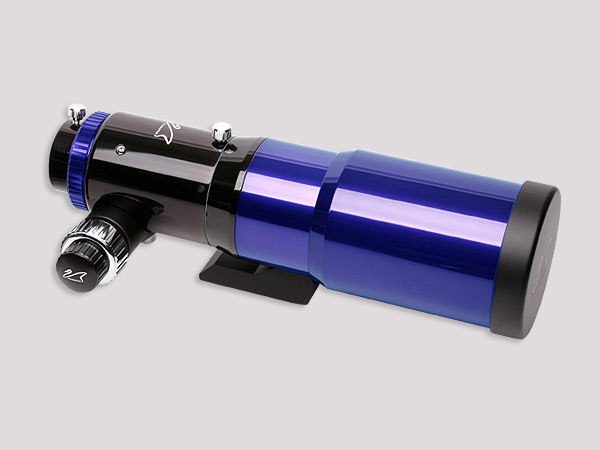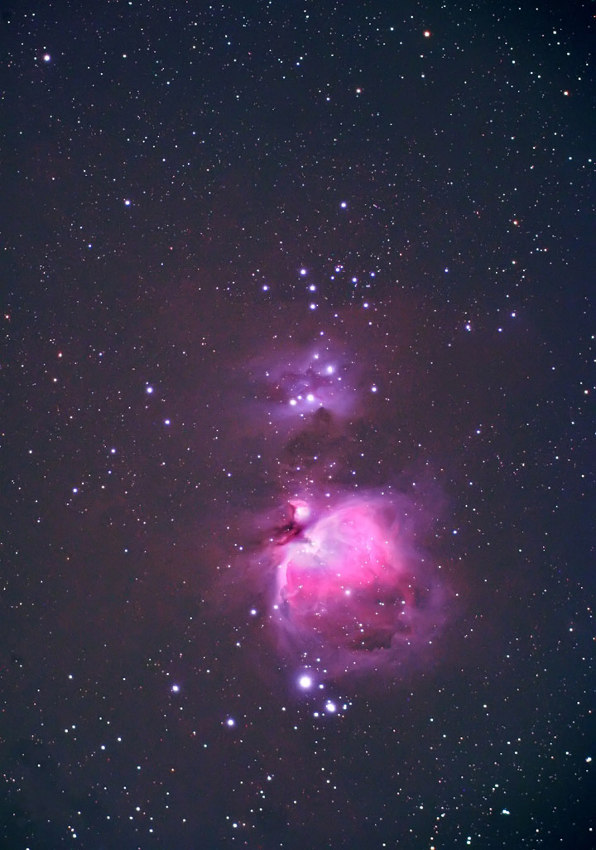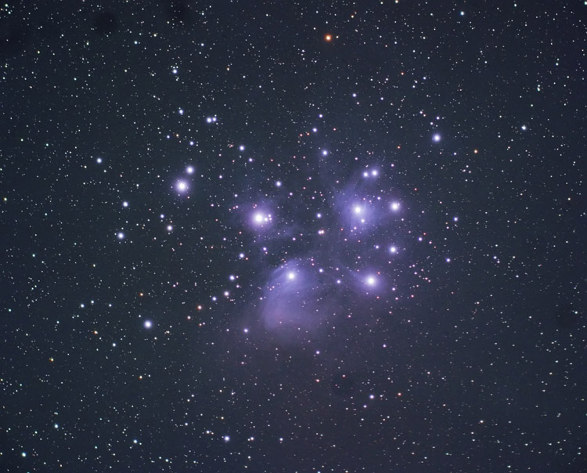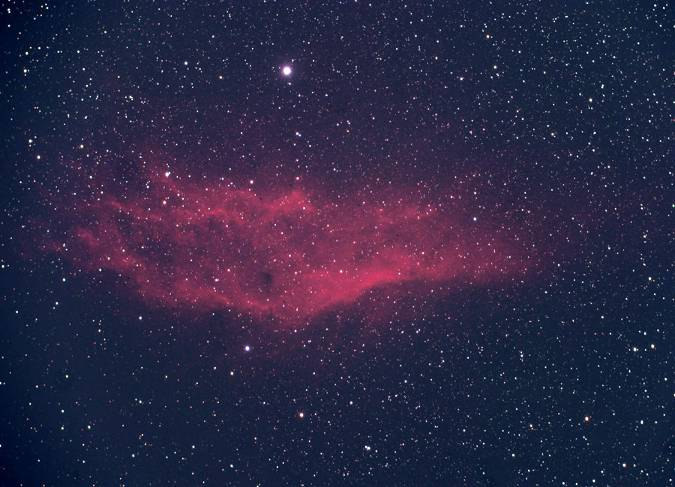

Some of the clouds lately have been my fault. At the FAAC Swap and Shop I took delivery of a small APO refractor made by William Optics—the Zenithstar 66 SD. For the last several weeks I have been using it as an astrograph in concert with my modified Canon 10D DSLR. I can honestly say that I have never owned a better behaved little scope!

This is an interesting little scope that uses an ED glass doublet to achieve very good color correction. I suspect it has a big following with owners of large Meade and Celestron SCT’s as a very high quality finder—it is available in Meade blue and Celestron Orange and has SCT style threads as an attachment on the focuser. This is kind of nice as you can use your SCT accessories with this little scope. The scope is a 66mm f5.9 scope providing 388mm FL. The doublet uses an FLP51 glass element as the ED element and the color correction is very good to my eye.
I was able to easily mount the scope on a tripod and look through it on the evening that I brought it home. Weather conditions were not the best but a star test showed good round diffraction rings on either side of focus. Saturn was sharp and color free on the edges. The most impressive thing about this first look was the very tight star images. Several moons of Saturn were visible as very tiny specks around the planet.
A week or so of poor weather followed and I was unable to do more than look at “stuff” in the house. With a 2” SCT diagonal this scope becomes sort of a long distance microscope able to focus to about 12 feet away. Images were again very clear and free of color fringing. I was becoming very happy with this little gem.
Speaking of gems—I should mention the fit and finish of this scope. It has a retracting lens shade that brings the scope length from 14.2” to a very transportable 11.8”. It comes equipped with a 1.6” crayford style focuser that features a 10:1 speed reducer on one side. The focuser also rotates to aid in composing a photograph and has a focus lock and a tension control. The focuser is butter smooth and easy to use. The focus tube has an etched distance scale to aid in rough focusing a camera. The anodizing of the tube and focuser is second to none! The scope is hefty for its size and everything about it screams quality.
Lens coatings are the WO “STM” full multi-coating and the glass just seems to disappear when you look directly at it. There are 10 baffles in the tube that is really a single piece with pointed areas on it’s inside diameter. It seems to do the job so far. The focuser has a built in heavy duty bracket for attachment to a tripod. The included 1.25” adapter has a nice brass compression ring to hold eyepieces and such. The scope even comes packaged in a nice aluminum case with extra room for accessories and eyepieces. The best part.... All this for $299.00!!!!!
Now—all you guys know that I seldom LOOK through a telescope preferring to hook up a camera and take astrophotos. Knowing I would be taking astrophotos I sprung for the .8 focal reducer / field flattener to assure that my DSLR would have nice sharp corners. In the last couple of weeks I was able to take the sub frames for three astrophotos through this scope. All were taken with my modified Canon 10D, on my G11 and guided by my ST4.

The first shot is old faithful M42. I took 6 five minute exposures for the main part of the shot and I “feathered” in several shorter series of exposures to eliminate the burned out area around the trapezium.

The next target a week or so later was M45. I took 9 three minute exposures and 4 five minute exposures with 2 three minute dark frames and 2 five minute dark frames. Deep Sky Stacker combined the images and my old copy of Photoshop 4 took care of the final tweaks. I have had a lot of trouble shooting M45 and getting the detail that I know is there. I was very happy to see how this little scope handled this cluster.

The same night I moved the scope over to NGC1499 and shot 11 five minute exposures and combined them with 2 five minute dark frames. I am pretty happy with the result as I think I got a LOT more detail than my best film shot of this object.
All in all I am thrilled with the performance of my first APO. I can hardly wait to try the Rosette with this scope and M31 should easily fit the FOV. I am looking forward to the summer milky way when I can shoot the North America Nebula, the Lagoon and all the nebulosity around Antares. I can recommend this scope without reservations to anyone that wants a small high quality APO refractor. If you want to look at one come on out the Seven Sisters Observatory in Manchester some clear evening or head on over the Riders Hobby Shop in Livonia. John Kirchoff keeps a sample in stock there. I must admit it is rather nice to be able to buy a scope like this locally!
I am sold on APO’s. They really make it easy to take some pretty good astrophotos. Now I need to save my pennies for a 90mm APO.... Hmmmmm.... they even make a 132mm version....